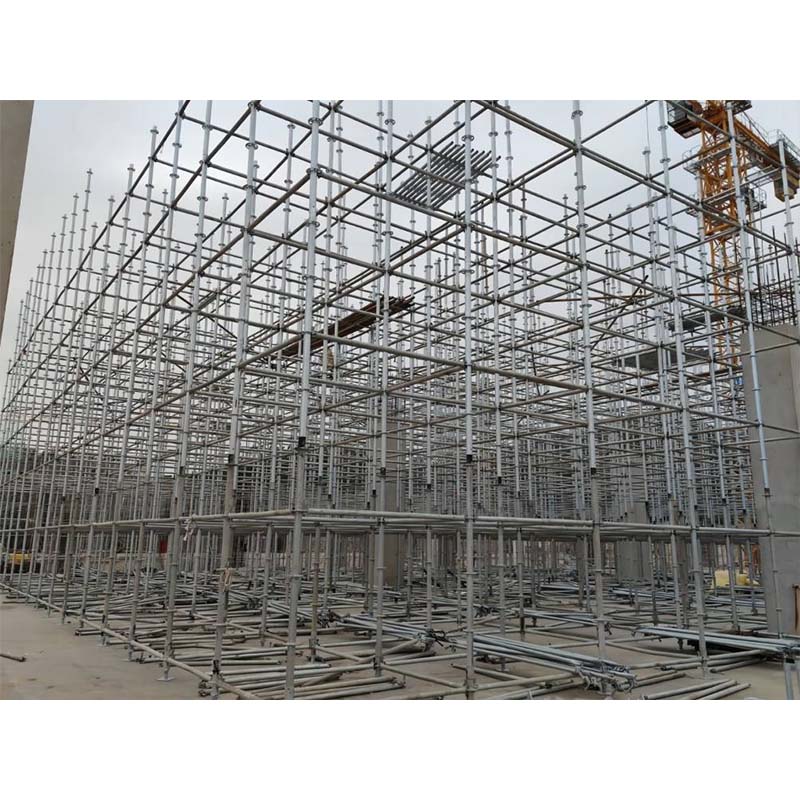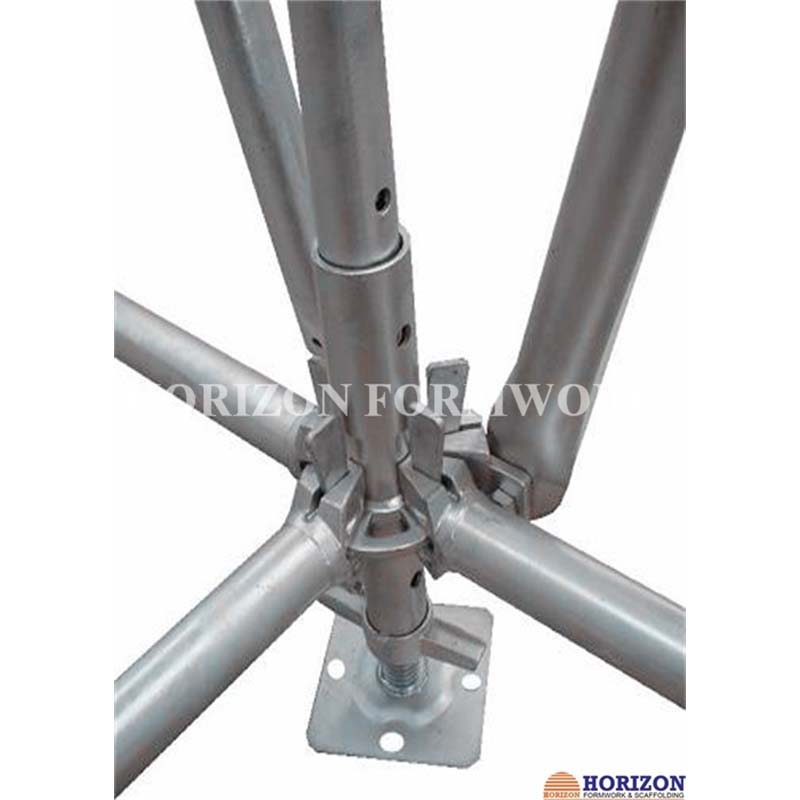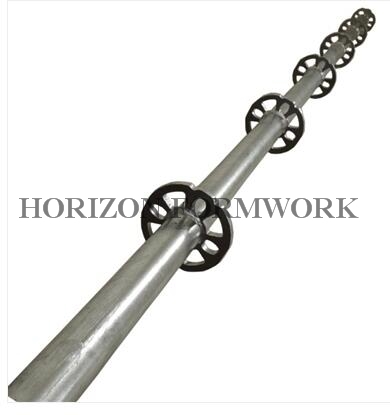kol . 27, 2025 02:20 Back to list
Ringlock Scaffolding: Strong, Safe & Efficient Solutions
Introduction to Ringlock Scaffolding Systems
The advent of modern construction demands solutions that combine safety, efficiency, and adaptability. Among the various scaffolding systems available, the ringlock scaffolding system stands out as a leading choice for its robust design and modular versatility. Originating from advanced engineering principles, this system offers unparalleled stability and rapid assembly, making it indispensable across a spectrum of industrial and commercial projects. Its unique rosette connection point allows for up to eight components to be connected simultaneously, providing exceptional structural integrity and flexibility for complex architectural geometries.
This article delves into the technical intricacies, application benefits, and strategic considerations for deploying this advanced scaffolding technology. We will explore its manufacturing precision, adherence to stringent international standards, and its demonstrable advantages in enhancing operational safety and project timelines for B2B stakeholders worldwide, including those seeking a reliable ringlock scaffolding manufacturer or china ringlock scaffolding supplier.
Industry Trends and Market Dynamics
The global scaffolding market is experiencing significant growth, driven by increasing infrastructure development, urbanization, and stringent safety regulations. Key trends include the rising demand for modular and system scaffolding due to their enhanced safety features, efficiency, and reduced labor costs compared to traditional tube and coupler systems. Digitalization, including Building Information Modeling (BIM) integration for scaffolding design, is also gaining traction, enabling precise planning and resource optimization.
Sustainability is another critical trend, with a focus on durable, reusable, and hot-dip galvanized systems that offer extended service life and reduced environmental impact. The market for ringlock scaffolding, in particular, is expanding rapidly as contractors and industrial clients prioritize systems that comply with global safety standards (e.g., EN 12810/12811, ANSI/ASSE A10.8) and offer superior load-bearing capacity for increasingly complex projects. This demand fuels innovation among ringlock scaffolding factories, pushing for greater efficiency in production and material science.
Manufacturing Process and Technical Specifications
Product Materials
The quality of ringlock scaffolding systems begins with premium-grade materials. Typically, high-strength steel, such as Q235 or Q345, is used for its excellent structural integrity and durability. Components undergo hot-dip galvanization (HDG) to provide superior corrosion resistance, extending the product's service life significantly, often exceeding 15-20 years even in harsh environments. The zinc coating, typically 60-80 microns thick, protects the steel from rust and abrasion, reducing maintenance costs and ensuring long-term safety.
Manufacturing Process Flow
The production of high-quality ringlock scaffolding involves a meticulous, multi-stage process designed to ensure precision, strength, and compliance with international standards.
- Material Selection & Cutting: Raw steel pipes (e.g., OD 48.3mm x 3.2mm or 60.3mm x 3.2mm for standards) are precisely cut to required lengths using automated CNC cutting machines, minimizing material waste and ensuring dimensional accuracy.
- Forming & Forging: Key components like rosettes, ledger ends, and brace ends are either hot-forged or precision-cast to achieve optimal strength and geometric accuracy. Forging enhances the grain structure of the metal, improving its mechanical properties.
- Welding: Components are assembled and welded using advanced robotic or semi-automatic welding techniques. This ensures consistent, high-penetration welds that are critical for the system's load-bearing capacity and structural integrity. All welding procedures adhere to standards like AWS D1.1.
- Punching & Drilling: Holes for ledger connections, diagonal braces, and other fittings are precisely punched or drilled using CNC equipment, ensuring perfect alignment and fit.
- Hot-Dip Galvanization: After fabrication, components undergo hot-dip galvanization. This involves cleaning (degreasing, pickling), fluxing, and then immersing the steel into molten zinc. This process creates a metallurgically bonded coating that provides superior corrosion resistance.
- Quality Control & Testing: Each batch undergoes rigorous testing, including visual inspection, dimensional checks, weld integrity tests (e.g., dye penetrant or magnetic particle inspection), load testing, and zinc coating thickness measurements.

Testing Standards and Certifications
Reputable ringlock scaffolding manufacturers adhere to international testing and quality standards to guarantee product reliability. Key certifications often include:
- ISO 9001: Quality Management System certification, ensuring consistent production processes.
- EN 12810 & EN 12811: European standards for facade scaffolds and performance requirements.
- ANSI/ASSE A10.8: American National Standard for scaffolding safety.
- AS/NZS 1576: Australian/New Zealand standards for scaffolding.
- OHSAS 18001 / ISO 45001: Occupational Health and Safety Management Systems.
Key Product Specifications (Typical)
| Component | Material Grade | Dimensions (OD x Wall Thickness) | Finish | Typical Lengths/Heights |
|---|---|---|---|---|
| Standard (Vertical) | Q235/Q345 Steel | 48.3mm x 3.2mm | Hot-dip Galvanized | 0.5m, 1.0m, 1.5m, 2.0m, 2.5m, 3.0m |
| Ledger (Horizontal) | Q235/Q345 Steel | 48.3mm x 2.8mm | Hot-dip Galvanized | 0.73m, 1.0m, 1.29m, 1.57m, 2.07m, 2.57m, 3.07m |
| Diagonal Brace | Q235/Q345 Steel | 48.3mm x 2.8mm | Hot-dip Galvanized | Various sizes to fit bay lengths/heights |
| Base Jack | Q235 Steel | 38mm solid bar or 48.3mm x 4mm tube | Hot-dip Galvanized | 300mm, 450mm, 600mm (adjustable) |
Load-bearing capacities vary based on configuration and height but typically range from 20 kN to 60 kN per standard leg, depending on the system's class and design.
Application Scenarios Across Diverse Industries
The versatility of the ringlock scaffolding system makes it ideal for a wide array of industries requiring reliable access and support structures.

Target Industries:
- Petrochemical and Energy: Essential for maintenance, inspection, and construction of complex structures like refineries, power plants, and offshore platforms, where corrosion resistance and structural integrity are paramount.
- Metallurgy: Used in steel mills, foundries, and smelting plants for furnace repair, structural upkeep, and access to elevated work areas in harsh, high-temperature environments.
- Water Supply & Drainage: Critical for constructing and maintaining water treatment facilities, pumping stations, and large-scale pipeline installations, often in damp or submerged conditions requiring robust, corrosion-resistant solutions.
- Civil Engineering & Infrastructure: Bridges, tunnels, viaducts, and major urban development projects rely on ringlock for formwork support, access, and temporary shoring.
- Shipbuilding: Provides adaptable access around hulls, superstructures, and internal compartments during construction, repair, and maintenance of vessels.
- Commercial & Residential Construction: Offers a safe and efficient solution for multi-story buildings, facade work, and intricate architectural designs.
Advantages in Typical Application Scenarios:
In scenarios like petrochemical plant shutdowns or bridge construction, the rapid assembly and dismantling of ringlock scaffolding significantly reduce downtime and labor costs. Its high load-bearing capacity makes it suitable for heavy formwork support in concrete construction, while its corrosion-resistant hot-dip galvanized finish ensures longevity and safety in marine or humid environments. The modularity allows for the creation of complex, curved, or elevated structures, such as boiler access in power plants or intricate falsework for historical building renovations, enhancing energy saving through efficient construction and long-term durability.
Technical Advantages of Ringlock Scaffolding
The design of the ringlock scaffolding system incorporates several key technical advantages that set it apart from traditional scaffolding methods:

- Unmatched Safety: The rosette connection point, featuring a secure wedge lock mechanism, eliminates loose components, significantly reducing the risk of human error during assembly. The positive locking action ensures structural integrity under various load conditions.
- Superior Efficiency: Its modular nature allows for rapid assembly and dismantling, typically 2-3 times faster than traditional tube and coupler systems. This translates to substantial labor cost savings and accelerated project timelines.
- Versatility and Adaptability: The ability to connect up to eight components at various angles (0, 45, 90 degrees) from a single rosette enables the construction of highly complex and curved structures, adapting to almost any architectural design or industrial requirement.
- High Load-Bearing Capacity: Engineered for strength, the system provides excellent vertical and horizontal load support, making it suitable for heavy-duty applications like shoring, formwork, and large-scale access platforms.
- Durability and Longevity: Hot-dip galvanization provides exceptional corrosion resistance, extending the product's lifespan and reducing maintenance needs, even in harsh environmental conditions. This ensures a higher return on investment over the system's operational life.
- Cost-Effectiveness: While the initial investment might be higher than basic scaffolding, the long-term benefits including reduced labor, faster project completion, minimal maintenance, and extended service life lead to lower overall project costs and a superior total cost of ownership.
Vendor Comparison and Selection Criteria
Choosing the right ringlock scaffolding supplier is crucial for project success and long-term operational efficiency. While many ringlock scaffolding factories exist, particularly in regions like China, discerning clients must prioritize several key factors beyond initial price.

Key Comparison Factors:
- Product Quality & Materials: Verify the use of high-grade steel (e.g., Q235, Q345) and consistent hot-dip galvanization thickness (e.g., >60 microns) to ensure durability and corrosion resistance. Inferior materials lead to reduced service life and safety risks.
- Certifications & Compliance: Ensure the manufacturer holds relevant international certifications (ISO 9001, EN 12810/12811, ANSI/ASSE A10.8, AS/NZS 1576) demonstrating adherence to global safety and quality standards.
- Manufacturing Process: Inquire about their manufacturing capabilities, including automation levels (robotic welding), quality control protocols, and testing procedures. Manufacturers employing advanced techniques generally produce more reliable products.
- Engineering Support & Design: A reputable vendor offers comprehensive engineering support, including layout design, load calculation, and structural analysis to optimize scaffolding configurations for specific project requirements.
- Customization Capabilities: The ability to provide bespoke components or system adaptations for unique project challenges is a significant advantage.
- Logistics & Lead Time: Evaluate their capacity for timely delivery, especially for large-scale projects or urgent requirements. Understanding their supply chain and export experience is vital for international procurement.
- After-Sales Support & Warranty: Assess the level of customer service, availability of spare parts, warranty terms, and technical assistance post-purchase.
Ringlock vs. Other Scaffolding Systems (Comparative Overview)
| Feature | Ringlock Scaffolding | Cuplock Scaffolding | Tube & Coupler |
|---|---|---|---|
| Connection Method | Rosette with wedge lock | Top & bottom cups | Couplers (clamps) |
| Assembly Speed | Very Fast (Modular) | Fast (Modular) | Slow (Component-based) |
| Safety Features | Highly secure, fewer loose parts | Secure, few loose parts | Relies on proper coupler tightening |
| Versatility for Complex Shapes | Excellent (8 connections at various angles) | Good (4 connections, fixed angles) | Good, but more labor-intensive |
| Load Capacity | High (up to Class 6 for heavy-duty) | High (up to Class 6) | Varies widely with configuration |
| Maintenance | Low (hot-dip galvanized) | Low (hot-dip galvanized) | Moderate (couplers can seize) |
Customized Solutions and Project Engineering
Beyond standard components, leading ringlock scaffolding suppliers offer bespoke engineering and design services to meet unique project specifications. This includes:
- Tailored Scaffolding Designs: Development of custom layouts for unconventional structures, complex facades, or heavy shoring applications, optimizing material use and ensuring safety.
- Specialized Components: Fabrication of non-standard length ledgers, special base plates, or unique access solutions for specific project demands.
- Integrated Solutions: Combining ringlock systems with other access solutions like stair towers, material hoists, or temporary roofs to create comprehensive site access strategies.
- Load Analysis and Optimization: Performing detailed structural analysis to confirm load capacities and optimize material quantities, preventing over-specification and reducing costs.
- BIM Integration: Providing 3D models and designs compatible with Building Information Modeling (BIM) workflows for seamless project planning and coordination.

By partnering with a manufacturer offering robust engineering capabilities, clients can ensure that their scaffolding solution is not only compliant but also perfectly adapted to their project's intricacies, maximizing safety and operational efficiency.
Application Case Studies & Customer Experience
Case Study 1: High-Rise Commercial Building Construction
A major construction firm undertook a 50-story commercial tower project in a dense urban environment. The primary challenge was rapid facade access and robust shoring for concrete slabs on multiple levels simultaneously. By deploying a comprehensive ringlock scaffolding system, the contractor achieved a 30% faster erection time compared to their previous tube and coupler projects. The system's high load-bearing capacity allowed for integrated temporary material storage on various levels, streamlining logistics. The hot-dip galvanized finish also ensured minimal wear despite exposure to urban pollutants over a two-year construction period. Customer feedback highlighted the enhanced safety and reduced labor requirements as key benefits.
Case Study 2: Petrochemical Plant Turnaround
During a scheduled turnaround at a large petrochemical complex, a ringlock system was utilized for extensive access to reactors, distillation columns, and pipe racks for maintenance and inspection. The system's modularity proved invaluable for navigating confined spaces and intricate piping. Its corrosion resistance was critical in a highly corrosive atmosphere, ensuring structural integrity throughout the demanding maintenance schedule. The rapid assembly and dismantling capabilities were crucial for meeting tight shutdown deadlines, significantly minimizing plant downtime and associated economic losses.
Case Study 3: Bridge Deck Support (Shoring)
For the construction of a new highway bridge, heavy-duty ringlock scaffolding was configured as shoring to support massive concrete bridge deck sections during curing. The system's inherent stability and high vertical load capacity (exceeding 40 kN per standard) provided a reliable falsework structure. Engineering design services from the manufacturer ensured optimal bay sizes and bracing patterns for uniform load distribution, successfully supporting tons of wet concrete without deflection. The ease of re-configuration for subsequent bridge segments further optimized project flow.
Trust & Support: FAQ, Lead Time, Warranty & After-Sales
Frequently Asked Questions (FAQ)
- Q: What is the typical service life of your ringlock scaffolding?
A: With proper handling and maintenance, our hot-dip galvanized ringlock scaffolding systems are designed for a service life of 15-20 years or more, even in challenging environments. The robust galvanization provides long-term corrosion protection. - Q: How does ringlock improve project safety?
A: Ringlock minimizes human error with its simple, positive wedge-locking mechanism. Fewer loose components and a highly stable structure reduce fall risks and enhance overall site safety, complying with stringent international safety standards. - Q: Can your ringlock system be integrated with other scaffolding types?
A: While primarily a standalone system, our engineering team can design specialized adaptors or transition components to safely integrate ringlock with certain other systems if required for complex hybrid projects, always adhering to safety protocols. - Q: What certifications do your products hold?
A: Our products are manufactured under ISO 9001 certified quality management systems and comply with international standards such as EN 12810/12811, ANSI/ASSE A10.8, and AS/NZS 1576, ensuring top-tier quality and safety.
Lead Time and Fulfillment
Standard ringlock scaffolding components typically have a lead time of 3-6 weeks from order confirmation, depending on order volume and current production schedules. For large-scale custom orders or specific project timelines, lead times will be confirmed upon detailed project assessment. We maintain efficient logistics channels to ensure timely delivery to global destinations.
Warranty Commitments
We stand behind the quality of our products. Our ringlock scaffolding systems come with a comprehensive warranty against manufacturing defects. Specific warranty terms and conditions are provided with each quotation, reflecting our confidence in the durability and performance of our systems under normal operating conditions.
Customer Support and After-Sales Service
Our commitment extends beyond delivery. We offer dedicated customer support, including technical assistance, site supervision guidance, and spare parts availability. Our expert team is available to provide remote or on-site support to ensure optimal deployment and maintenance of your scaffolding system. We prioritize client satisfaction and long-term partnerships.
Conclusion
The ringlock scaffolding system represents a pinnacle of modern scaffolding technology, offering an unparalleled combination of safety, efficiency, and adaptability for complex construction and industrial projects. Its robust design, adherence to stringent international standards, and long-term durability make it a highly cost-effective and reliable choice for B2B decision-makers and engineers globally. By choosing a reputable ringlock scaffolding company that prioritizes quality, engineering expertise, and comprehensive customer support, businesses can ensure safer, faster, and more efficient project execution, driving superior returns on investment.
References
- European Standard EN 12810-1:2003, Facade Scaffolds from Prefabricated Components - Part 1: Product Specifications.
- American National Standard ANSI/ASSE A10.8-2019, Scaffolding Safety Requirements.
- International Organization for Standardization ISO 9001:2015, Quality management systems – Requirements.
- The Galvanizers Association, Hot Dip Galvanizing - A Guide for Specifiers.
- Construction Industry Institute (CII) Best Practices Guide, Scaffolding Management.
This is the last article
-
Ringlock Scaffolding: Strong, Safe & Efficient Solutions
NewsAug.27,2025
-
OEM Column Formwork: Circular, Curved & Inclined Solutions
NewsAug.26,2025
-
Premium Scaffolding Jacks: Stable, Adjustable & Durable
NewsAug.25,2025
-
OEM Wall Formwork & Shuttering: Flexible & Curved Solutions
NewsAug.24,2025
-
Adjustable Heavy Duty Props for Slab Formwork | Strong & Reliable Support
NewsAug.23,2025
-
Adjustable Heavy Duty Props for Slab Formwork - Strong & Safe Support
NewsAug.22,2025